When it comes to good nutrition, Sharon Day believes in starting early.
“Our goal is to begin our babies with an Indigenous diet,” Day explained. Traditionally, “we had corn, beans, and squash. Those were our foods, along with wild rice, and if we ate meat, it was very lean, low cholesterol.”
That’s very different from “the foods they began to feed us,” said Day, referencing European colonizers. “The commodity foods, white flour, white sugar, these foods high in cholesterol.”
The Indigenous Peoples Task Force (IPTF), a Minneapolis organization Day co-founded in 1987, is now making an effort to hit reset on that unhealthy diet. The first jars of Indigi-Baby food were released in 2023, providing families with a wholesome and sustainable alternative to commercial products.
SHARON DAY, CO-FOUNDER, INDIGENOUS PEOPLES TASK FORCE“The goal is when young mothers give birth, they would nurse their babies. And then from the nursing, give them this baby food, which doesn’t have any of the sugar, fats, or salts, or flour — the [ingredients] that are killing us.”
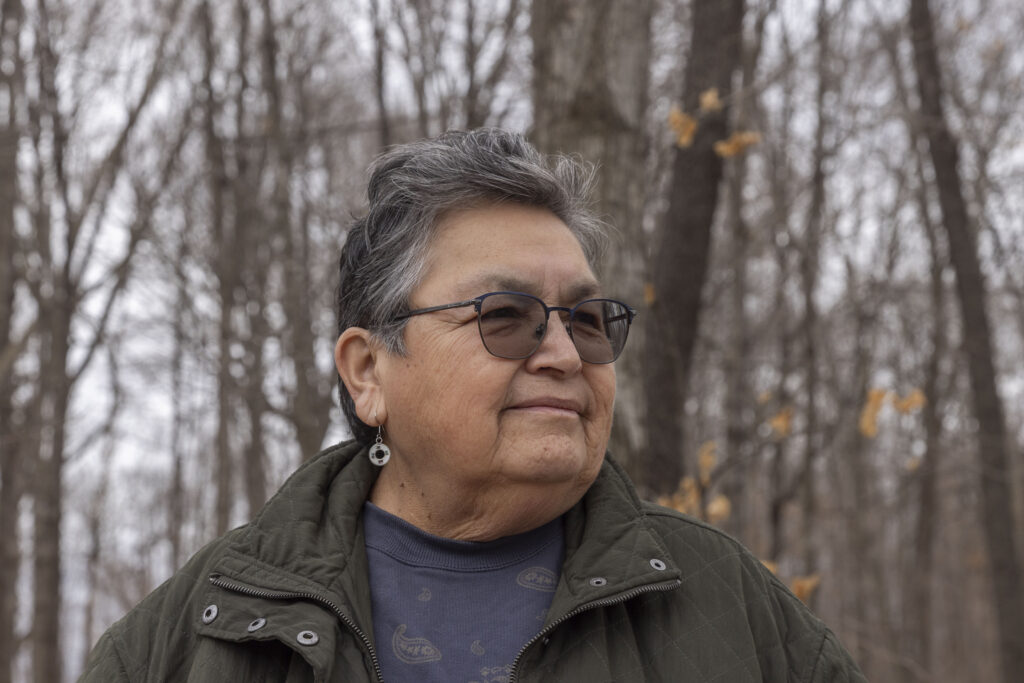
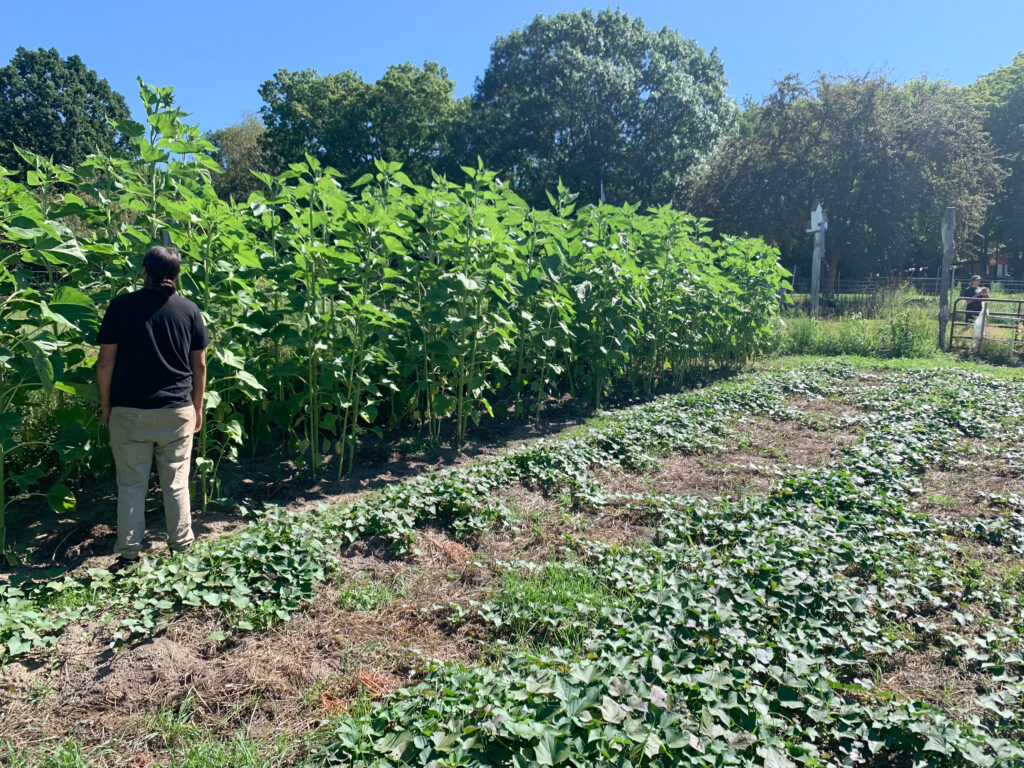

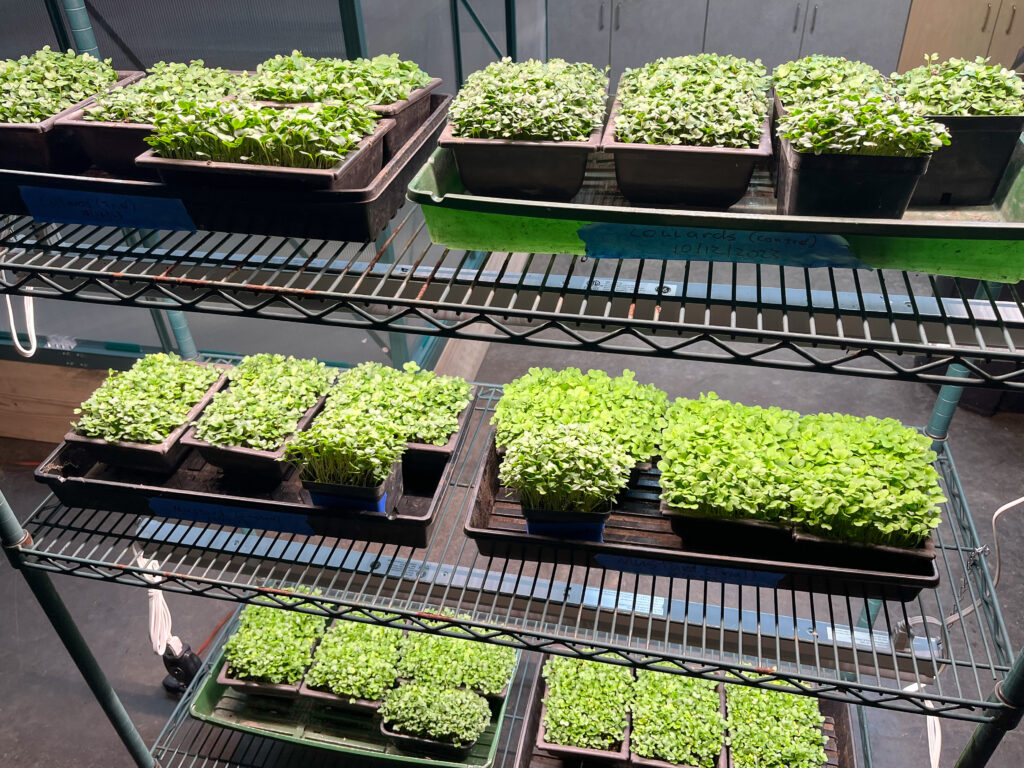


The IPTF has been developing its baby food for nearly a decade, said Mike Neumann, the program’s agroecology coordinator. There was extensive testing of the recipes, which were created by Lori Watso — a chef and nurse from the Shakopee Mdewakanton Dakota Community. That was followed by a national search for a partner to help produce and package the foods, as well as a struggle with pandemic-era supply chain delays.
“It’s much more complicated than we imagined in the beginning,” said Day. Indigi-Baby bucks the status quo for 21st century baby food: the products need to meet not only government regulations but also the IPTF’s own high standards for food quality and back-to-basics packaging.
“Most of the baby food on the market these days comes from these little plastic pouches,” said Day. “We didn’t want to do that, so ours is actually canned in jars — and so we have to get licensed for the process.”
The food’s integrity begins at the source. Ingredients are grown locally, using heirloom seeds and methods that forgo the extractive approach of industrial agriculture. “The strategies we use,” said Neumann, “are geared towards improving soil health, helping to attract pollinators, bird and other life.”
“We don’t use any herbicides, any pesticides, none of that,” said Day.
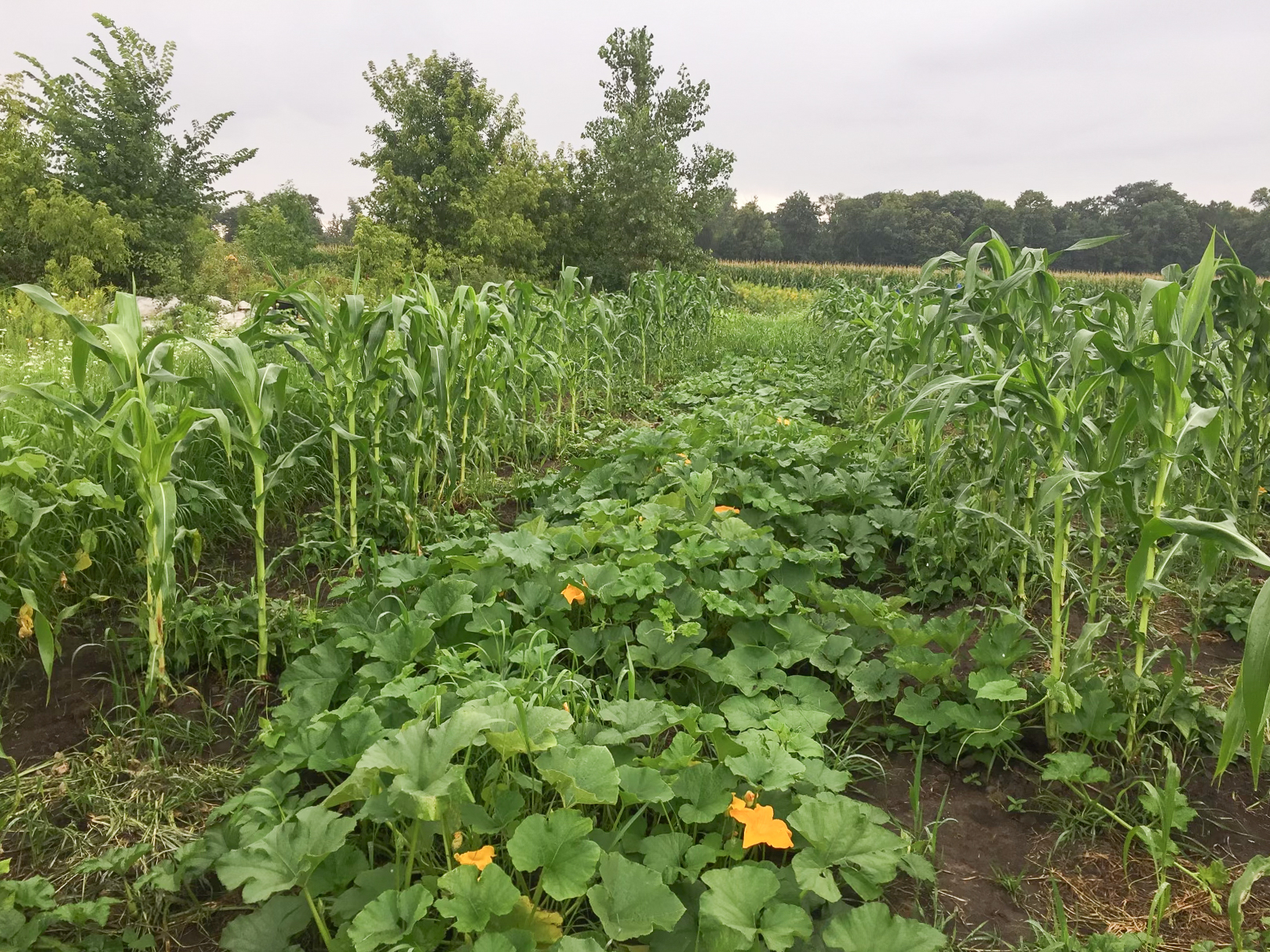
“There’s a sweet potato and Hopi black bean,” said Day, grabbing different Indigi-Baby jars to list the varieties. “Gete okosomin and butternut squash. Wild rice and apple juice; a little bit of lime juice and maple syrup. Sweet potato and rutabaga, and in this one there’s also super tender rutabaga apples and a little bit of lime juice.”
The first batch of Indigi-Baby food was produced in association with North American Traditional Indigenous Food Systems, an organization founded by famed Oglala Lakota chef Sean Sherman. IPTF is currently exploring more options for partners to produce future batches.
In distributing the first jars of Indigi-Baby, IPTF prioritized community health clinics and food shelves, in Minnesota and elsewhere. “Our goal is to get it to as many Native babies [as possible],” said Day.
“The goal,” she elaborated, “is when young mothers give birth, they would nurse their babies. And then from the nursing, give them this baby food, which doesn’t have any of the sugar, fats, or salts, or flour — the [ingredients] that are killing us.”
Neumann said grocers are already asking when they can stock Indigi-Baby products, which may start appearing on regular store shelves as the project’s capacity increases.
Nationally, there’s at least one other brand of baby food informed by a similar philosophy: Bidii Baby Foods, a New Mexico company based in the Navajo Nation. According to its website, Bidii Baby Foods wants to challenge the assumption “that traditional foods are reserved for times of ceremony or celebration (mainly because they are expensive and hard to come by).”
That accords with a larger goal of increasing access to traditional foods, for the health of the community and of the earth. The crops that become Indigi-Baby food have proved more resilient to climate shocks, and because more carbon is stored in the soil compared to at heavily-tilled conventional farms, said Neumann, “it’s also helping in a very small way to reverse climate change.”
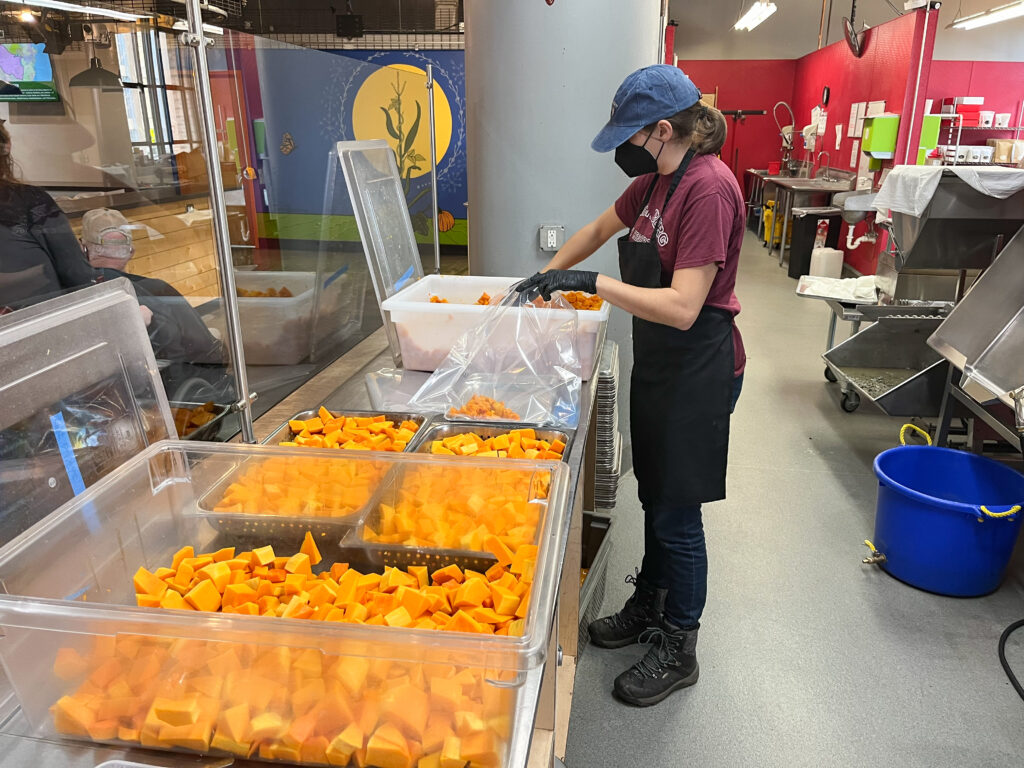
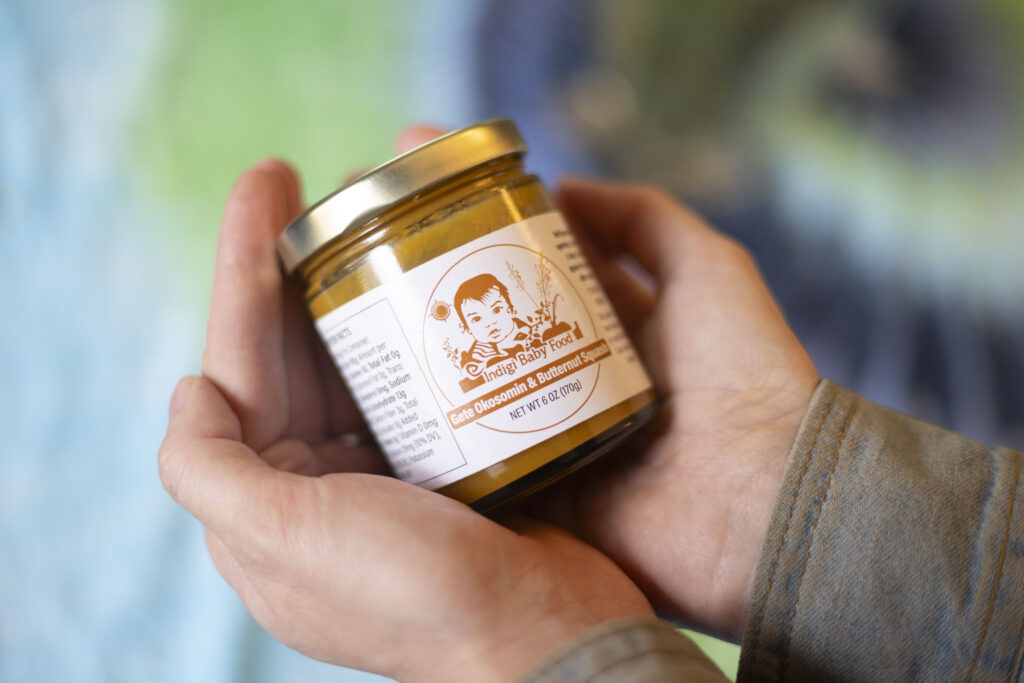


Regarding IPTF’s more crop-diverse, less invasive farming practices, said Neumann, “We know it works in other places, and we’re seeing it here as well. It’s something that we’re hoping to do more to promote as part of Indigi-Baby foods: these Indigenous-based, regenerative agroecology methods.”
And the babies like it, too, said Day. “So far, so good,” was how she described families’ reactions to the first shipment of Indigi-Baby. During the testing process, Day couldn’t resist trying a spoonful or two herself.
“It tasted pretty good to me,” said Day. “I think you could take the same ingredients and make smoothies with them. That’s how good they are — and they’re very healthy.”
